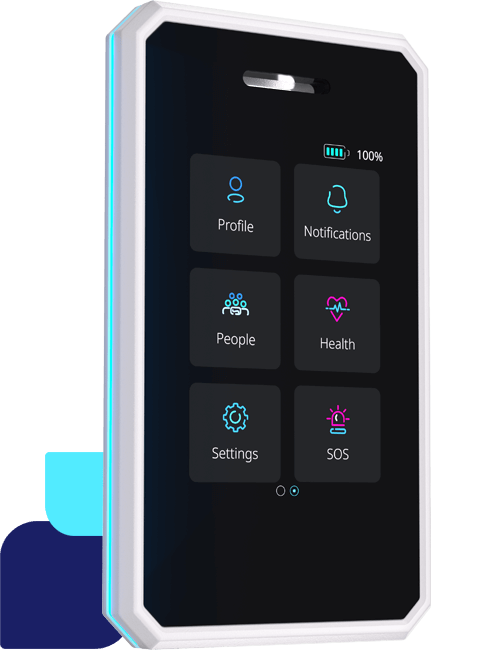In the rapidly evolving landscape of real-time location systems (RTLS), choosing the right technology is critical to ensure accuracy, reliability, and cost-effectiveness. Real time location systems, Such as Sense, often have the capability to make use of several different technologies, but it’s important to know where one technology might be more appropriate than another. Among the various options available, LTE-M (Long-Term Evolution for Machines)[GU1] is gaining traction as a promising solution. It’s essential to understand when LTE-M should be used instead of alternatives like BLE (Bluetooth Low Energy), cellular, or Wi-Fi. In this blog post, we’ll explore the scenarios where LTE-M shines in the context of RTLS. [GU2]
What is LTE-M?
Developed by 3GPP, LTE-M is a type of 4G cellular network, which is designed for IOT (Internet of Things) applications.
What are the benefits of LTE-M?
1. Wide Area Coverage:
One of the most compelling advantages of LTE-M is its extensive coverage area. Unlike BLE, which has a limited range of up to 100 meters, LTE-M can provide connectivity over much larger distances. When your RTLS needs to track assets, vehicles, or people across a wide area, such as a large outdoor facility or an entire city, LTE-M becomes a valuable choice. Its ability to cover wide areas minimizes the need for a dense network of beacons or access points, reducing deployment complexity and cost.
2. Mobile Asset Tracking:
When you’re dealing with mobile assets that frequently move across various locations, LTE-M’s seamless handover capabilities make it a superior choice. BLE and Wi-Fi networks are primarily designed for stationary or short-range communication. On the other hand, LTE-M is built for mobility, enabling continuous real-time tracking as assets transition between cell towers. This makes it ideal for applications like vehicle tracking, logistics, or fleet management.
3. Low Power Consumption:
While cellular networks can be power-hungry, LTE-M offers a balance between power consumption and performance. It’s energy-efficient, making it suitable for battery-operated devices. In contrast, Wi-Fi can drain batteries quickly, and BLE, although energy-efficient, may not be suitable for long-term tracking of mobile assets due to its limited range. For RTLS solutions that rely on battery-powered sensors, LTE-M is a viable choice.
4. Reliability in Challenging Environments:
LTE-M’s robust connectivity can overcome interference and challenging environments where Wi-Fi and BLE may struggle. This is crucial for applications that demand reliable real-time location data, such as industrial facilities, warehouses, or healthcare settings with obstacles like walls, machinery, or metal structures that can impede signals.
5. Security and Data Privacy:
Security is paramount in RTLS applications, especially in sectors like healthcare, where patient privacy is of utmost importance. LTE-M offers strong security features, making it suitable for sensitive applications. It can provide encrypted data transmission and authentication, enhancing the protection of location data. While cellular and Wi-Fi networks can also offer security, BLE’s security may be less robust, making LTE-M a better choice for highly secure environments.
6. Global Coverage:
LTE-M is a standardized technology used worldwide, providing global coverage. This is particularly advantageous for organizations with international operations. In contrast, Wi-Fi networks may vary in standards and frequencies from one region to another, making them less suitable for a consistent global RTLS solution.
7. Cost-Effective Scalability:
The cost of deploying and maintaining an RTLS solution can be a significant consideration. LTE-M offers a cost-effective way to scale your RTLS infrastructure, as it eliminates the need for infrastructure investments like Wi-Fi access points or BLE beacons. Moreover, LTE-M networks are maintained and upgraded by mobile network operators, reducing the burden on your organization to manage and maintain the network.
In conclusion, LTE-M is a compelling choice for real-time location systems when specific requirements come into play. Its wide coverage area, mobile asset tracking capabilities, low power consumption, reliability in challenging environments, security, global coverage, cost-effective scalability, and integration with existing cellular infrastructure make it a versatile solution. While BLE, cellular, and Wi-Fi have their strengths in various contexts, LTE-M’s capabilities shine in scenarios where extensive coverage, mobility, and security are paramount. When considering an RTLS for your organization, carefully assess your needs and the strengths of each technology to make an informed decision.







